Israel: It’s one of the world’s smallest countries, yet this “Holy Land” abuts some of the world’s most hotly contested lands, and it’s considered “Holy Land” because it played a pivotal role in the development of multiple religions. For such a small country, Israel is surprisingly complex — from the bustling cosmopolitan coast of Tel Aviv to the sacred hills of Jerusalem, and from the verdant mountain trails in the north to the sizzling Negev Desert in the south.
We recently spent a week exploring Israel and many of its best offerings. We’re hitting the beach, touring the city streets, walking the paths made famous by the likes of Jesus and multiple imperial armies, trying out some of the Middle East’s hottest wineries and breweries, and venturing to the country’s most spectacular natural wonders to show you different sides of this country you think you know — an unexpected Israel full of stupendous surprises.
A Re-introduction to Israel
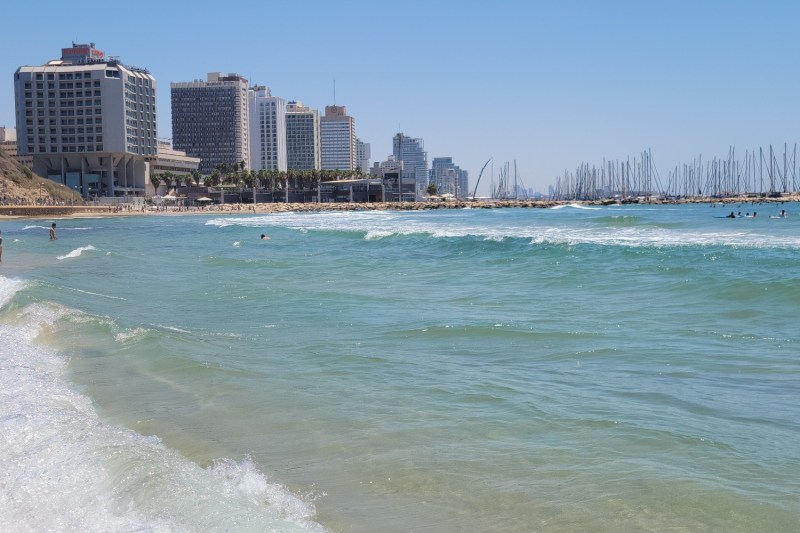
Sadly, most Americans merely see Israel as “that place from the Bible” where conflict is constant. In contrast to the frequent news clips featuring horrifying violence, Israel offers far more to visitors, and it’s much safer than most assume. (We’ll discuss this in greater depth later.)
While Israel has plenty of historical landmarks that are sacred to devout followers of Judaism, Christianity, and Islam, this country has also emerged as a leading tech industry hub and the Middle East’s ultimate “startup lab.” It’s also home to the Middle East’s most open and vibrant LGBTQ+ communities — especially in Tel Aviv. It’s become a celebrated culinary destination where chefs from the world over come to discover their new favorite hummus, feast on shawarma meats, and check out new and emerging trends in vegan cuisine. While billions of people around the world cherish Israel for its Biblical history, we shouldn’t make the mistake of ignoring everything else that makes this small country so hugely attractive.
Here’s a Fast and Essential Israeli Geography Lesson
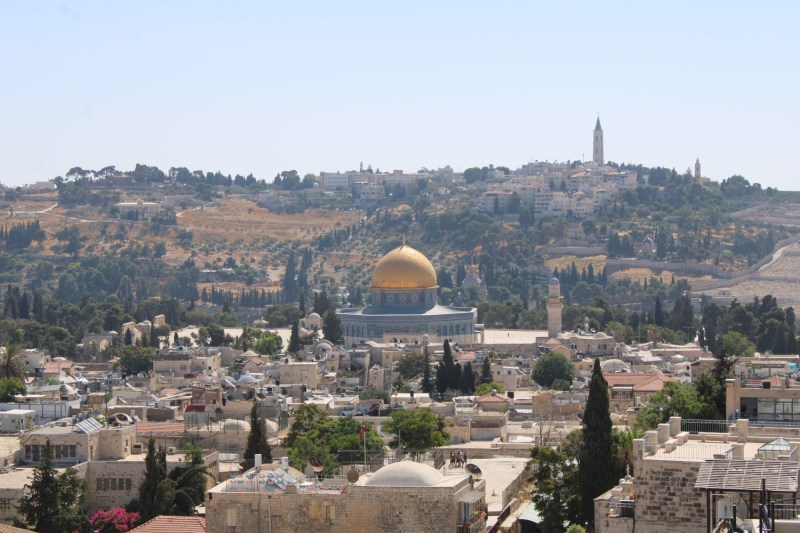
If you’re traveling to Israel, you’re probably flying into Ben Gurion Airport. If you drive a mere 24 kilometers (or about 15 miles) northwest on Israel’s Highway 1, you’ll reach Tel Aviv. Tel Aviv abuts the Mediterranean Sea, so here’s where you’ll find Israel’s most popular beaches and the kind of cosmopolitan vibes that make this city feel more Western European. About 95 kilometers (or 59 miles) north of Tel Aviv, you’ll find Haifa — home to the Baháʼí World Centre, two of the Middle East’s most prestigious universities, the Middle East’s oldest underground transit system, and a city full of vibrant and diverse neighborhoods.
To the north and east of Haifa, you’ll discover the Galilee: A stunningly beautiful region that overflows in ethnic and religious diversity, authentic farm-to-table cuisine, locally operated wineries and craft breweries, and captivating history in cities like Akko (or Acre), Nazareth, and Tiberias. If you’re driving or doing a guided tour with a designated driver, you’ll probably get to drive through the magnificent Judaean Desert that Israel shares with the Palestinian-governed West Bank on your 104-mile trek southwest to the holy city of Jerusalem.
You can find the world-famous Dead Sea east of Jerusalem and the sizzling Negev Desert south of Jerusalem. Unfortunately, we had a limited amount of time to explore Israel, so we couldn’t reach every part of this dynamic country. For this guide, we’ll be focusing on what you can see and do in Tel Aviv, the Galilee, and Jerusalem.
Where to Stay
Despite its small size, Israel has a wide variety of accommodations. Tel Aviv has a robust collection of brand-name hotels by the beach, while Jerusalem has a fascinating mix of posh hotels with ample amenities and charming inns that overflow with historic relevance. You’ll find a smaller collection of coastal resorts at the Dead Sea and in Eilat, and you’ll mostly find smatterings of inns and hotels across the country. Here are the places we had the opportunity to stay during our trip to Israel.
Tel Aviv – Cinema Hotel
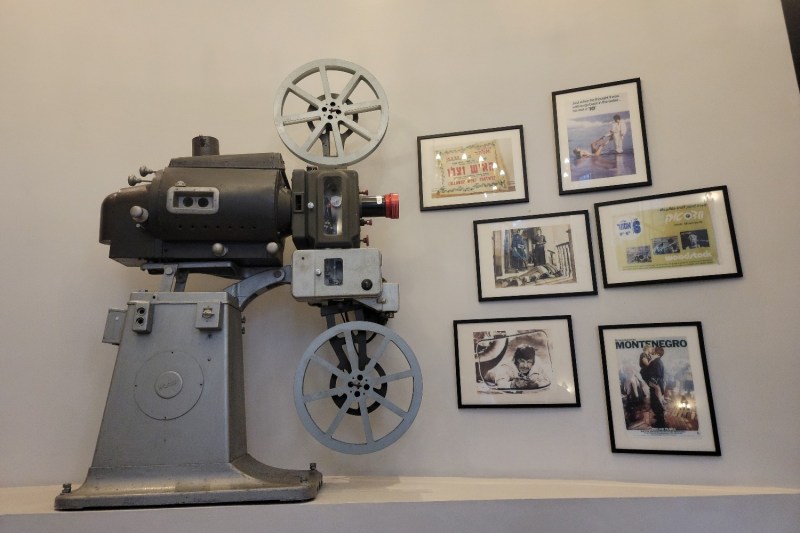
Located in the heart of bustling Dizengoff Square, what was once a 1930s vintage Bauhaus movie theater is now Cinema Hotel. The rooms may be a bit on the small side, but they’re very stylishly appointed, and some feature views of the city. Make sure to head downstairs every morning for a lavish breakfast buffet that includes plenty of well-crafted and authentic Israeli dishes. Even better, Cinema Hotel is smack dab in the middle of one of Tel Aviv’s most dynamic urban neighborhoods. It’s a brief one-kilometer walk to Frishman Beach, and it’s a close walk or bike ride away from plenty of Tel Aviv’s top attractions.
- Nearest Airport: Tel Aviv – Ben Gurion
- Time: 30–45 minutes by car
- Distance: 25 kilometers (or 16 miles)
Sea of Galilee – Nof Ginosar Hotel
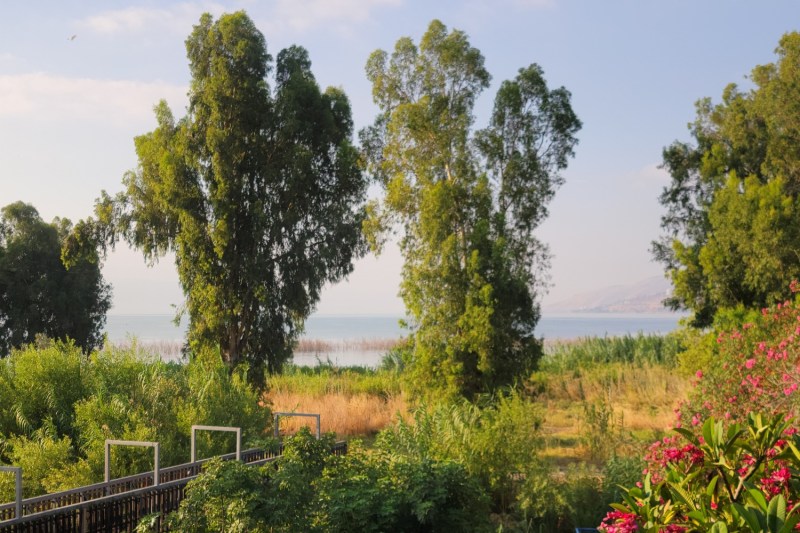
Located within an incredibly scenic kibbutz (or an Israeli intentional community) on the shores of the Sea of Galilee, Nof Ginosar offers rooms and suites that include LCD TVs, safe boxes, fridges, and minibars. Some rooms and suites also offer lovely views of the Sea of Galilee. The decor may seem a bit dated, but everything feels comfortable and well maintained, and the rooms are spacious. Not only does Nof Ginosar offer a full breakfast buffet to guests every morning, but it also has a private lakeside beach, expansive lawns and gardens that are perfect for picnics and field days, a full-service spa, and summer concerts.
- Nearest Airport: Tel Aviv – Ben Gurion
- Time: 1.5 to 2 hours by car
- Distance: 149 kilometers (or 93 miles)
Jerusalem – Dan Boutique Hotel
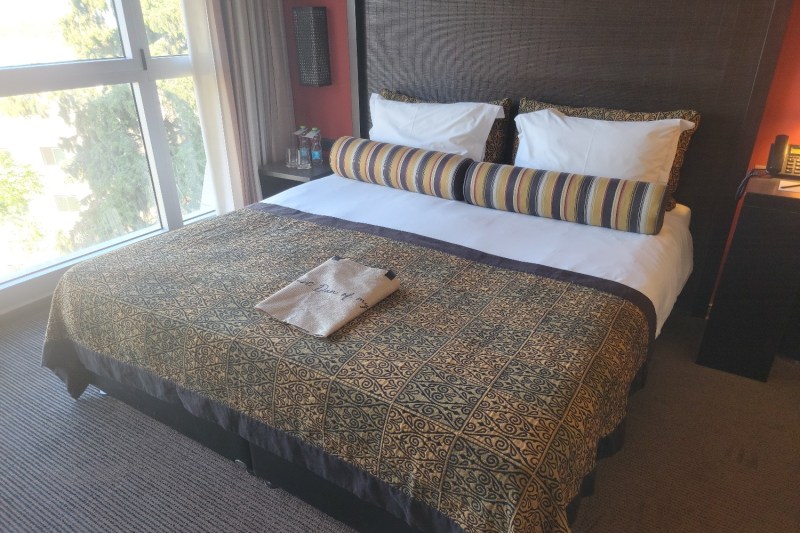
Tucked away near the historic and picturesque German Colony, the Dan Boutique Hotel is great for travelers who want the best of both worlds — old and new, as well as East and West. It’s incredibly close to all the Old Jerusalem sites that you want to visit, yet it’s also within walking distance of the hip and happening First Station entertainment district. The Dan Boutique has beautifully updated rooms and suites, a full-service bar/restaurant, a delectable breakfast buffet available every morning, a fitness center, a third-floor sundeck with amazing city views, free wifi internet in rooms and on-premises, and concierge services to help with anything else you need.
- Nearest Airport: Tel Aviv – Ben Gurion
- Time: About one hour by car
- Distance: 57 kilometers (or 35 miles)
Where to Eat
Yes, you will find plenty of international food in Israel, from pizza to burgers and so much more. But since you’re in the “Holy Land,” why not try some local cuisine? Not only are we cluing you in on the best spots to taste the best hummus, but we also want to give you a heads-up on restaurants that serve the best Israeli dishes that you may not even know about. You’re welcome.
Price Key
- “$” = budget-friendly or cheap
- “$$”= average
- “$$$”= expensive
Tel Aviv
Puaa
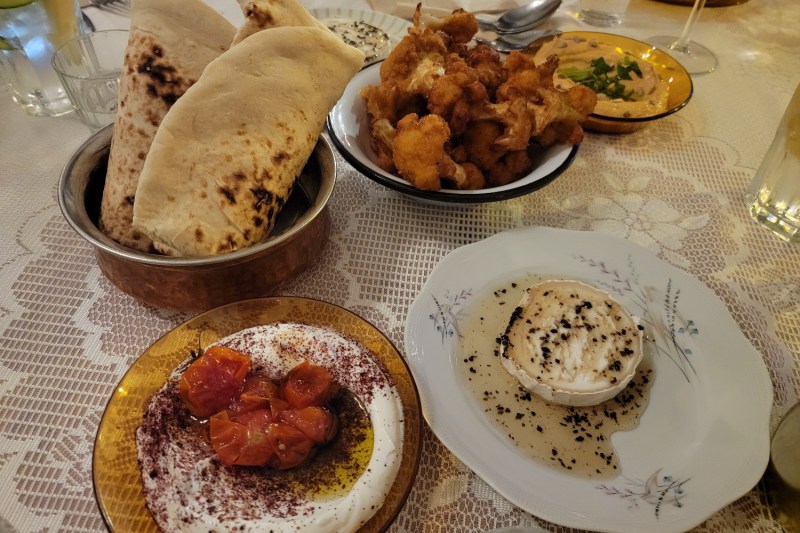
Located in the heart of Old Jaffa, Cafe Puaa serves plenty of tasty Israeli and Mediterranean fare — including all-day breakfast! Whether you’re in the mood for a hearty plate of moussaka (a lasagna-esque dish that consists of layers of thinly sliced eggplant and potato in tomato sauce), börek (a Turkish savory phyllo dough pie filled with spinach and feta), or some light nibbles of hummus and fried cauliflower, you’ll be very happy with what you find here. With its retro chic decor and friendly service, this restaurant feels like your favorite local indie coffee shop … If your coffee shop somehow landed in the middle of a charming and ancient seaside village.
- Best for Breakfast, Lunch, and Dinner
- $$
Hummus Abu Dabi
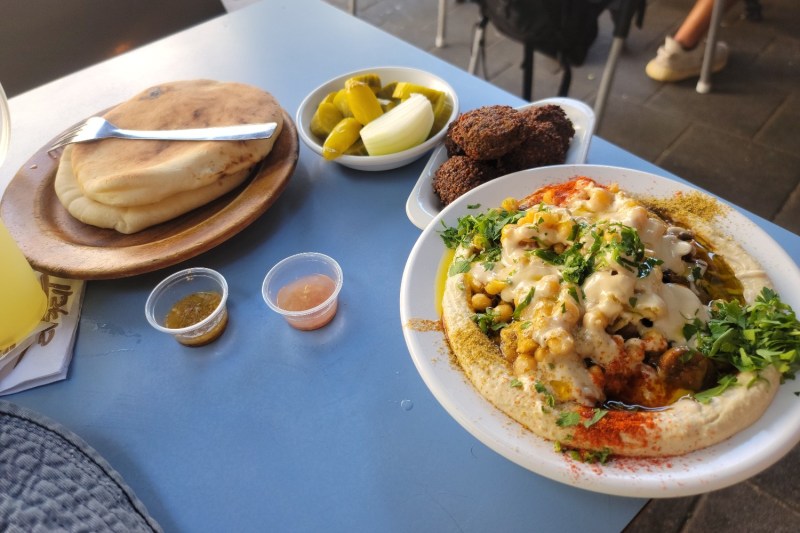
Off the beaten path yet surprisingly close to Dizengoff Square, Hummus Abu Dabi offers a delicious and authentically local taste of Tel Aviv hole-in-the-wall fare. Step onto the patio, grab a seat, and order at the counter — even if you don’t speak any Hebrew, the staff will help and guide you to the food and drinks you want. We were particularly blown away by the hummus with mushrooms: The delectable contrast of silky-smooth hummus, tender sautéed mushrooms, and slightly crunchy chickpeas is out of this world, and the addition of the restaurant’s expertly cooked falafel makes for an even more ethereal meal that somehow doesn’t break the bank.
- Best for Lunch and Dinner
- $$
Messa Chef Restaurant
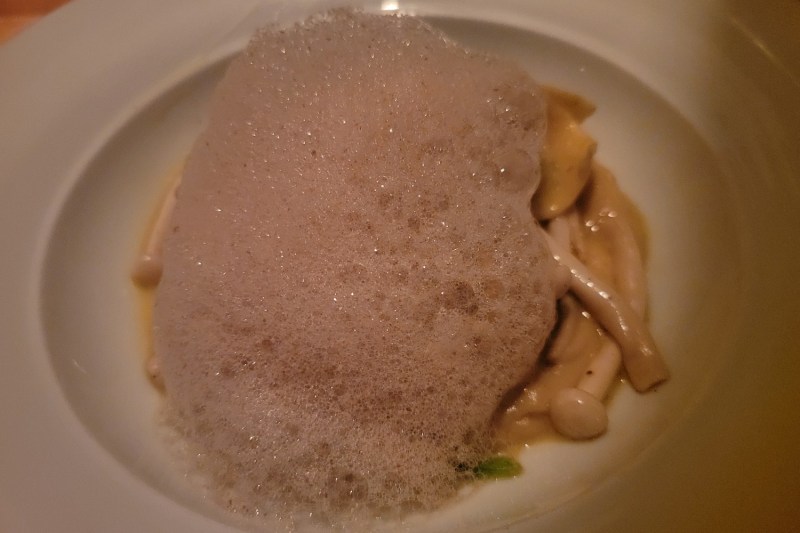
Is it a fine dining restaurant? Is it a classy bar? Is it an art exhibit? Yes. If money is no object and you want to go all in on the ultimate night out, you may want to check out Messa in Tel Aviv’s uber-trendy Sarona neighborhood. The food menu may not seem all that traditionally Israeli, but it’s quite tasty. It’s comparable to the fare we find at similarly upscale “destination dining” spots in cities like Los Angeles and Miami. If you really want to eat on the wild side, order the porcini and mascarpone tortellini with foam for dinner, then “the galaxy” — a white chocolate malted ball that’s full of surprises — for dessert. Messa also has a bar area where you can not only grab another drink or two but also encounter live bands, DJs, visual artists, and more.
- Best for Dinner
- $$$
Galilee
Hummus Abu Elias
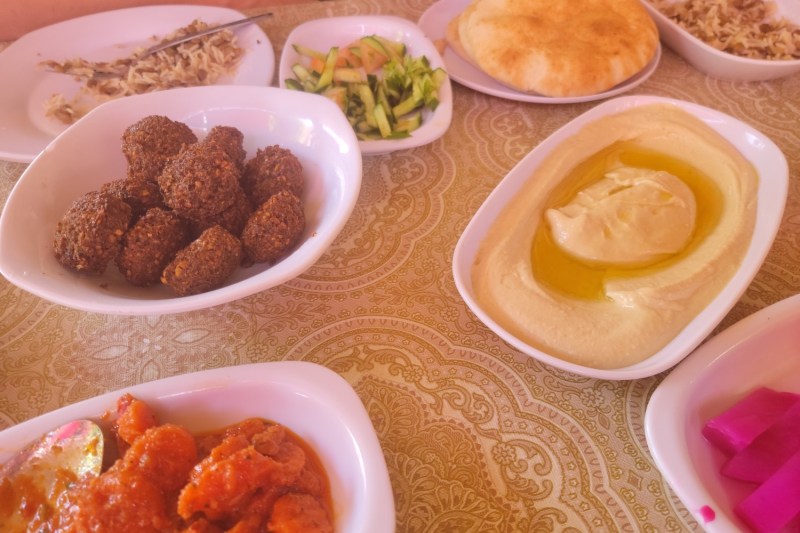
Located a very short walk away from the Knights’ Hall in Old Akko, Abu Elias has the best hummus you’ll find on this stretch of the Israeli coast. Not only does it serve two delicious types of hummus — a classic version with olive oil on top and one with a generous layer of pine nuts on top — but it also serves great baba ghanoush (eggplant dip), shawarma meats, traditional Levantine salads, and much more. Even better, Abu Elias participates in the local “Bite Card” program, which means you can sample food from here and several more Old Akko restaurants in one day for one flat rate.
- Best for Breakfast and Lunch
- $
Alto Dairy
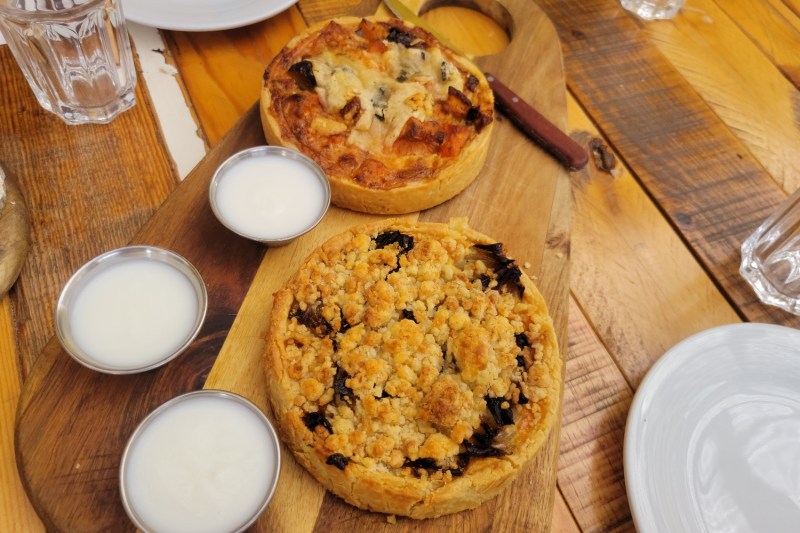
Situated in Kibbutz Shamat near Akko, Alto Dairy is a family-run small business that’s essentially the epitome of “farm to table.” Kibbutz member Ariel continues to make all the goat cheeses himself while the family pitches in at the café, where you can try Ariel’s famous cheeses, a variety of delicious savory and sweet delights from the bakery, and even Alto’s signature goat milk ice cream. There’s really no bad dish here, but we’re especially partial to the sweet potato quiche. Once you taste it, you may never want quiche without sweet potato ever again!
- Best for Breakfast and Lunch
- $$
Tosha Bakery

Located near the famed Rosh HaNikra grottoes and the Israel-Lebanon border, Tosha Bakery is another special local-to-Galilee labor of love. Friends and co-owners Shahaf Avraham and Tomer Swisa join forces to bake some truly remarkable pastries, including savory fare like bird’s-nest-style veggie fritters and sweet treats like mousse-filled eclairs and cheese danishes with fresh berries. They run a full-service café featuring masterpieces from their bakery and a variety of coffee and tea drinks. The café stays open late for dinner (and the occasional performances by local musicians) on select nights. Not only is all the food incredibly delicious and the staff incredibly friendly, but the café patio even features incredible views of the nearby Mediterranean Sea.
- Best for Breakfast, Lunch, and Select Dinners
- $
Jerusalem
Adom

Nestled in the First Station complex, a 19th-century train station turned buzzy shopping and dining district, Adom offers some of Jerusalem’s finest non-Kosher cuisine. It’s particularly well-known for its seafood, but hardcore carnivores will appreciate the steaks and burgers, and vegetarians and vegans have tasty options as well. If you’re in the mood for pasta, try the cheese-stuffed shells with artichokes — if you know, you know. And while it may sound basic, the dessert cheesecake truly is divine.
- Best for Dinner
- $$$
Knaf
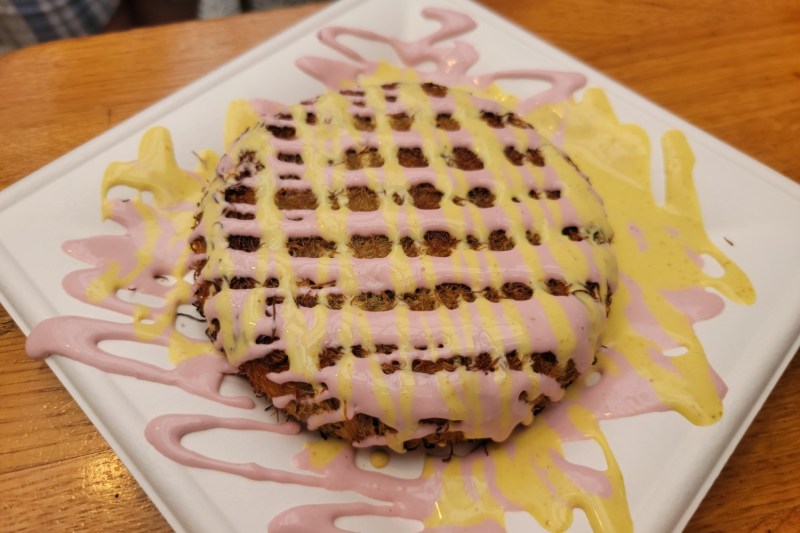
Traditionally, knafeh is a Levantine dessert that consists of (usually mozzarella-esque) cheese, shredded phyllo pastry, and a rose water syrup called attar. But at Knaf in Jerusalem’s Mahane Yehuda Market, they make savory knafeh that turns tradition on its head. We tried the vegan savory knafeh and were blown away by its amazing flavor.
- Best for Lunch, Dinner, and Late Night
- $
Arafat Hummus
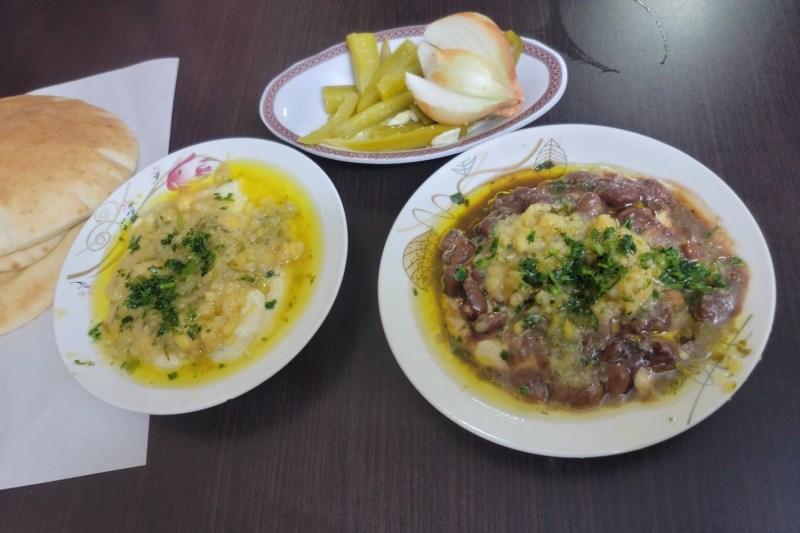
Deep inside the storied souk (or traditional Arabic open-air market) of Jerusalem’s Old City, this hummus spot does not have a website, an Instagram or TikTok account, a business phone number, or even an official name. However, what it lacks in official internet presence, it more than makes up for in phenomenal food. If you’ve ever wanted to try Arab-style hummus, this is the best stuff you’ll find in town. Try the hummus with beans and the hummus with extra garlic, and you will be amazed … And hopefully, you will thank us later.
- Best for Breakfast and Lunch
- $
Jafar Sweets
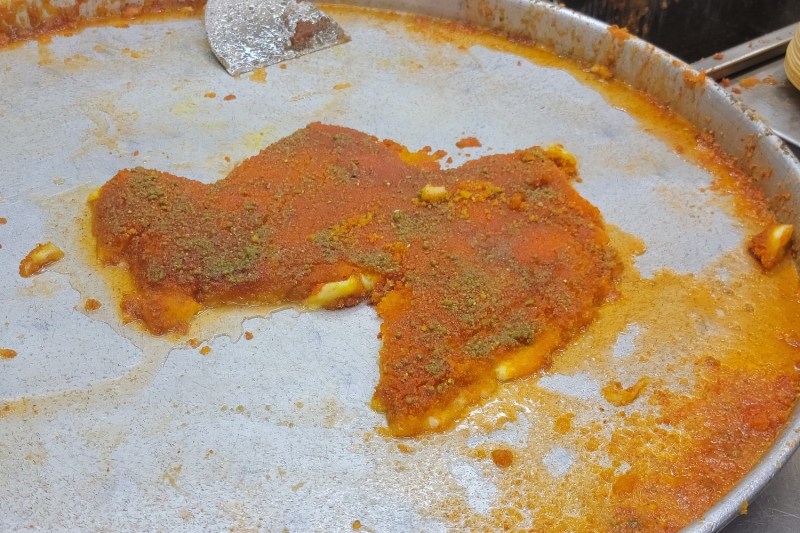
Also in the Old City souk, Jafar Sweets has served the tastiest treats to locals, celebrities, and travelers for more than 70 years. If you prefer your knafeh the old-school way, you must stop here. It’s cheesy, it’s sweet, and it’s downright magical. This traditional pastry shop has somehow survived multiple wars, intifadas, Old City renovation projects, and so much more, and one taste of the knafeh goes so far to explain why.
- Best for Breakfast and Lunch
- $
What to Do
Whether you’re a dedicated history buff, an avid nature lover, a laid-back beach bum, or an adrenaline-fueled treasure hunter, there’s plenty for you to do in Israel.
Tel Aviv
The Beaches
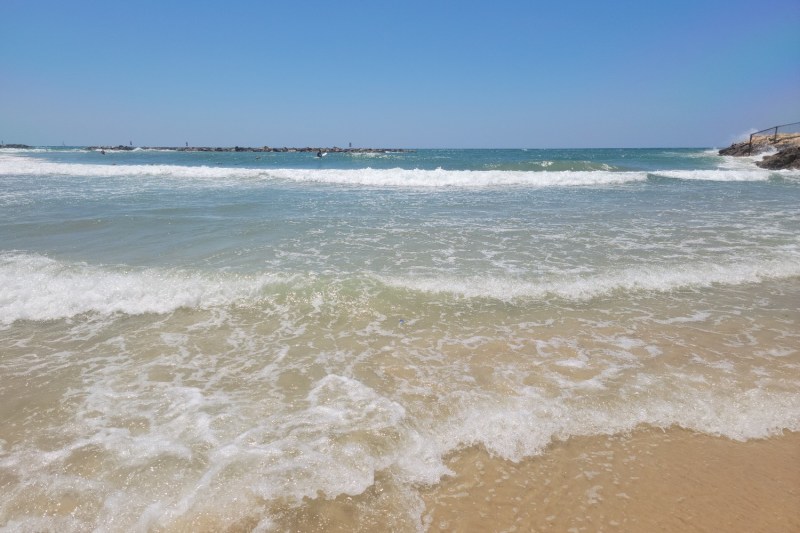
If you like spending quality time at the beach, you will love Tel Aviv. With over 14 kilometers (or eight miles) of the Mediterranean Sea coastline, Tel Aviv will have the beach for you. Families with young children will appreciate the playgrounds and netted swimming areas at Frishman Beach. LGBTQ+ travelers and locals will love the welcoming vibes at Hilton Beach. Surfers will love the waves at Alma Beach near Old Jaffa.
Old Jaffa
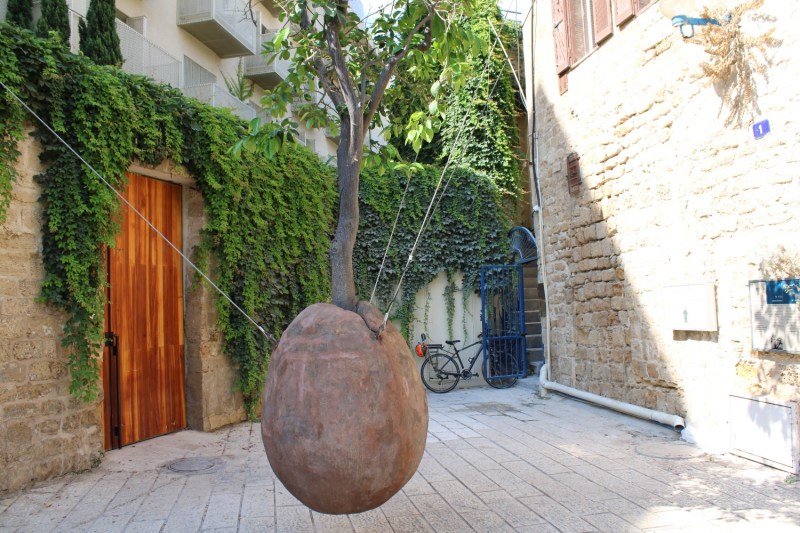
While Tel Aviv has developed a reputation as Israel’s hub for new ideas and progressive culture, that doesn’t mean you can’t find any ancient history here. In Old Jaffa (or Yafo), you can explore buildings, passageways, and the old port — some of which date all the way back to Biblical times. Here you will find some of the city’s best traditional Middle Eastern restaurants, and you will find a thriving artists colony where artists and artisans offer everything from sophisticated jewelry to post-modern abstract paintings and so much more. If you really want to get your friends talking on Instagram and TikTok, head to the Clock Tower and the Suspended Orange Tree to create your own viral moments.
Nachalat Binyamin Art Fair
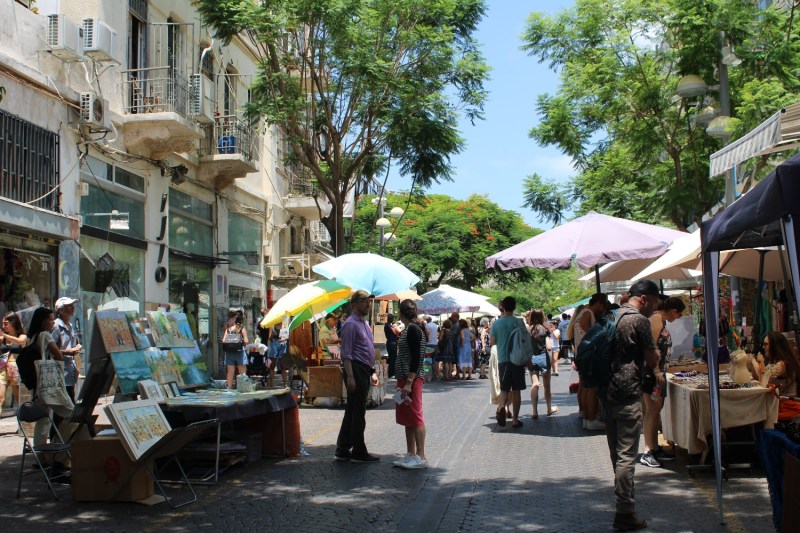
The Nachalat Binyamin Art Fair is Israel’s oldest and most storied arts and crafts market. It was first established in 1988, and it’s still going strong every Tuesday and Friday in the heart of Tel Aviv. Whether you’re into Judaica artifacts, handcrafted ceramics, original fashion from local designers, or unique sculptures, you can probably find what you’re looking for here. In addition to all the visual artists, this art fair also regularly features live music and additional street performers, so this is truly a must-see-and-do when you’re in Tel Aviv.
Carmel Market
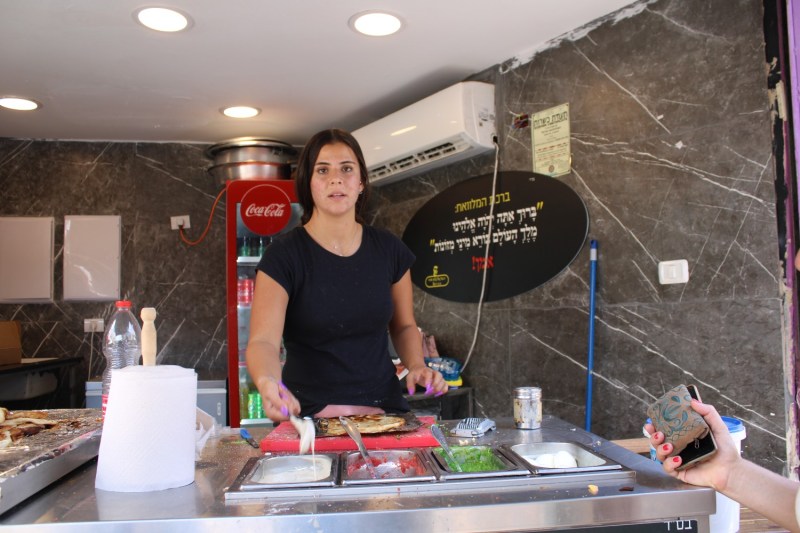
If you’re hungry for something different, prepare for the ultimate street food feast at Carmel Market. While some locals and long-time travelers don’t appreciate Carmel Market’s recent evolution from a traditional Israeli shuk (or open-air market) into more of an American-style food hall, we can say with confidence that this isn’t any food hall with the same storefronts you can find in any major U.S. city. Rather, be on the lookout for stands with plenty of deliciously unique offerings, including malawah (a Yemeni flaky flatbread that can be filled with meats and/or veggies), dolmas (stuffed grape leaves), and shawarma.
Galilee
Old Akko
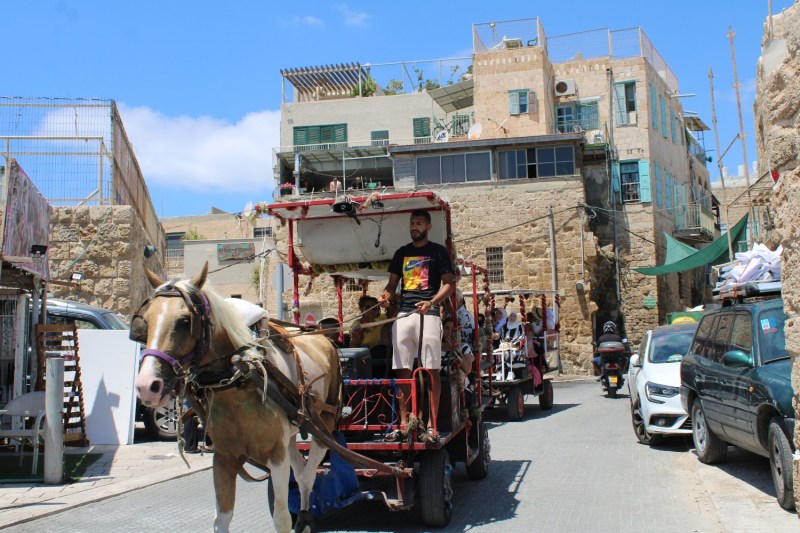
Whether you prefer to call this town Acre or Akko (locals prefer the latter), this town is definitely worth visiting. Located 25 kilometers north of Haifa, Akko’s Old City is officially recognized as a UNESCO World Heritage Site due to its rich collection of historic artifacts that date all the way back to Hellenistic-Roman times, as well as still-standing structures from the Medieval Crusader era. Though Akko experienced a new round of sectarian strife last year, this town has once again proven its resiliency. Many in the local Jewish, Muslim, Christian, Druze, and Baháʼí communities continue to work together to build a more peaceful city and draw in more visitors to this truly unique place.
Galileat
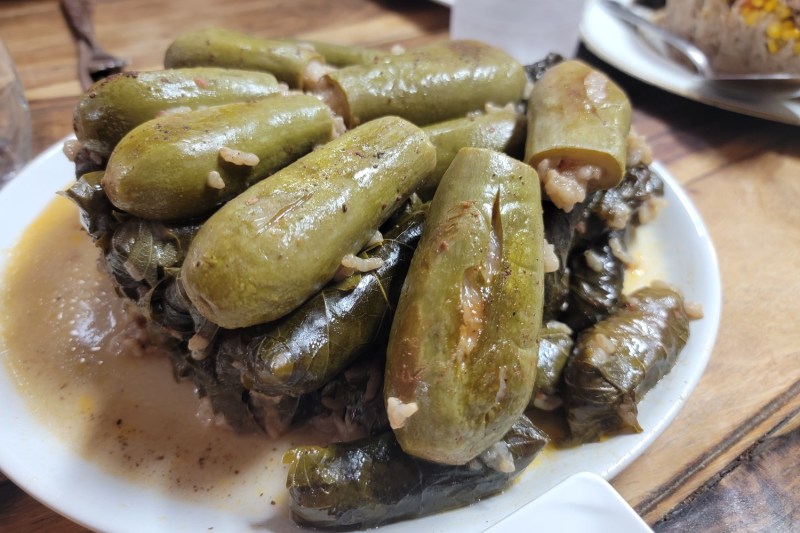
Sure, you can do dinner at any number of hyper-touristy restaurants promising “meals of Biblical proportions!” But if you really want a hyper-local experience that you will probably always remember and cherish, make sure to book a home hospitality date with Galileat. They can pair you up with a local Muslim, Druze, Christian, or Bedouin family who will invite you into their home to share a meal, possibly teach you how to make their favorite dishes, and show you another side of the Galilee — and of Israel. We had the amazing fortune of having dinner with Mi’ad. She taught us plenty about local Druze culture and showed us how to make the best dolmas this author has ever eaten. Her gracious hospitality was perhaps the highlight of this trip.
Tiberias
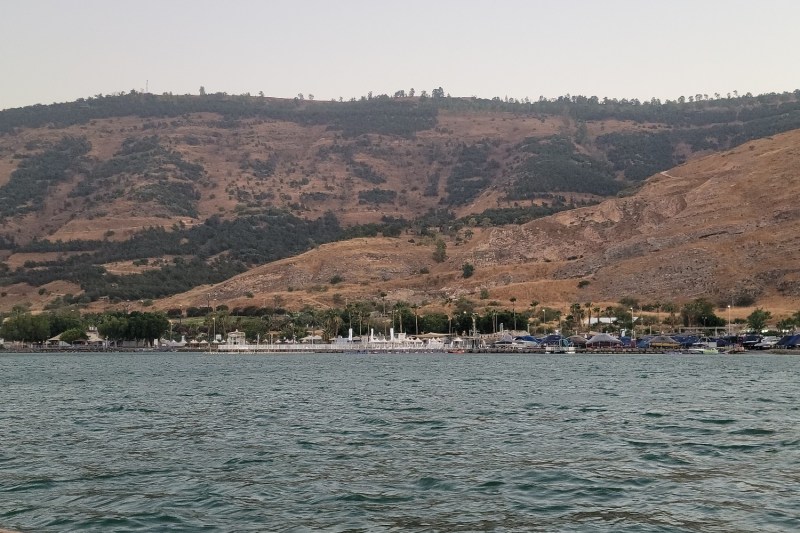
Nestled alongside the Sea of Galilee, Tiberias is one of Judaism’s four holy cities of Israel. It was the last seat of the Sanhedrin — or the Supreme Court of Jewish law – during Roman Imperial times. It was also a place of refuge for Jews fleeing Jerusalem and southern Israel after the Jewish-Roman wars. Tiberias again became a welcoming refuge during the Medieval and Renaissance periods, when a new wave of Sephardic Jews came here to escape persecution in Spain and Portugal. Now visitors come to Tiberias to enjoy a scenic refuge by the lake, and it’s a great launchpad for travelers to explore the many ancient historic sites throughout the region.
Kishor Vineyards
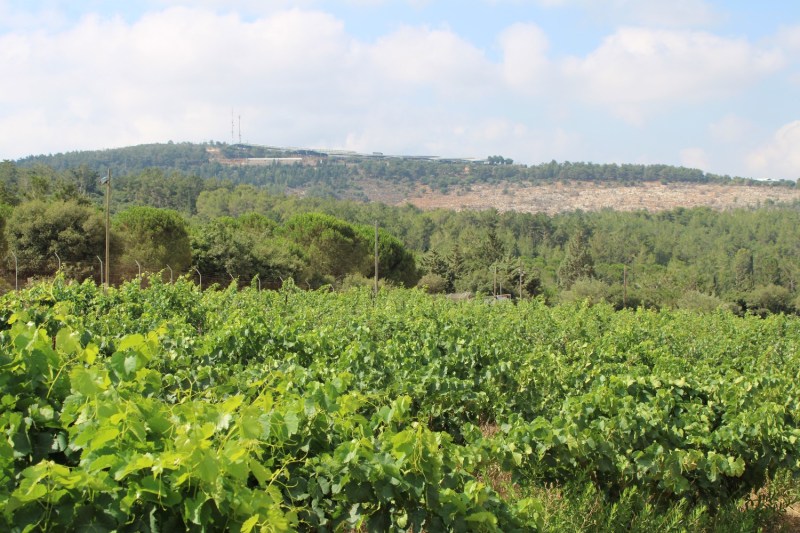
Nestled in the upper western Galilee mountains, Kishor Vineyards has it all: Gorgeous scenery, great wines, and a heartwarmingly noble mission. Kishor Vineyards is part of Kishorit Village, a community designed to integrate people with special needs and different abilities into the larger society. Not only does Kishorit provide comprehensive social services to this region, but it’s also in the midst of launching new programs in Arab Israeli communities and developing an American Kishorit in San Francisco. Oh, and did we mention that Kishor Vineyards turns out high-quality and award-winning wines, including merlot, Grenache, Syrah, chardonnay, and rosé? Come here to taste these wonderful wines and take in the beautiful views, and stay to learn more about the wonderful community they’re building here.
Malka Brewery
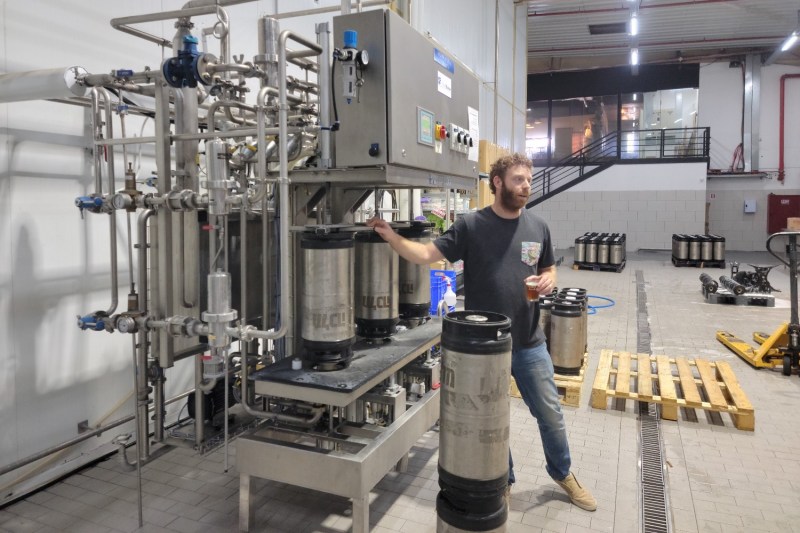
Since 2006, Malka has been a pioneer in Israel’s craft beer scene. While Americans have become familiar with the burgeoning craft beer communities in urban hubs like San Diego and Denver, Malka has blazed its own trail in the Upper Galilee with a limited yet distinct collection of pale ales, stouts, blond ales, and a uniquely distilled craft beer spirit that you have to see and taste to believe. Malka has a beer garden in Kibbutz Yehiam and a saloon at its Tefen brewery where you can enjoy Malka’s yummy brews. The Tefen brewery even offers tours to groups that book in advance.
Columbia Maghar
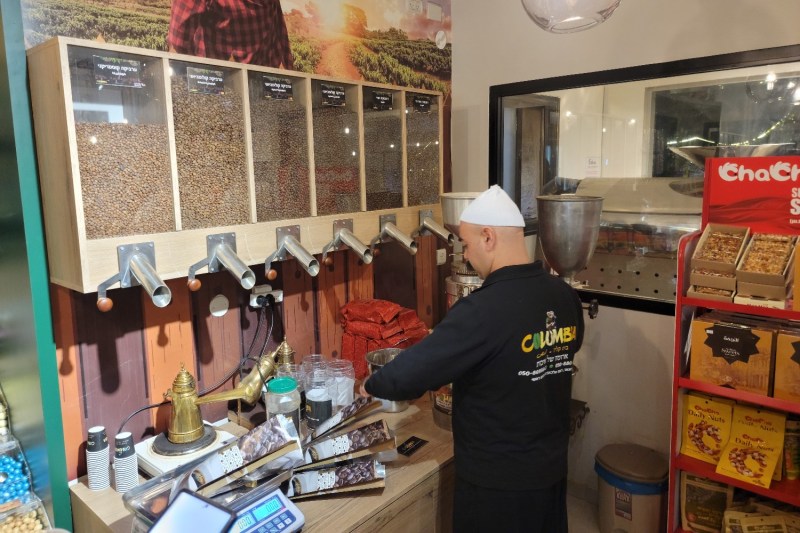
If you’ve ever wanted to try authentic Arabic coffee, you have to stop here. This place is the real deal. Plus, it’s the community market where you can find plenty of tasty sweet treats. Not only can you stop here to get a better glimpse of the real local culture of the Upper Galilee, but you can also load up on some of the best coffee that we’ve ever had. The beans here are so strong, you might have a hard time returning to certain big Western brand names once you’re back home.
Odette Chocolate & Pralines Boutique
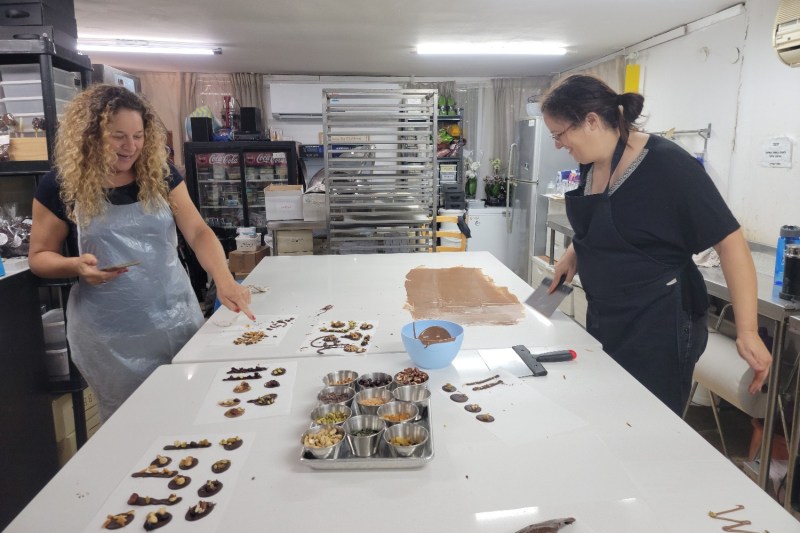
Materials engineer and Israeli defense industry veteran Dr. Shlomit Zamir now runs a very different lab tucked away in Kibbutz Regba. This lab produces delectable chocolates! No matter what you’re looking for — boozy chocolates, avant garde chocolates, and even vegan chocolates — Odette most likely has them. This dessert haven also offers chocolate workshops where you can try your own hand at creating chocolate delights.
Rosh HaNikra
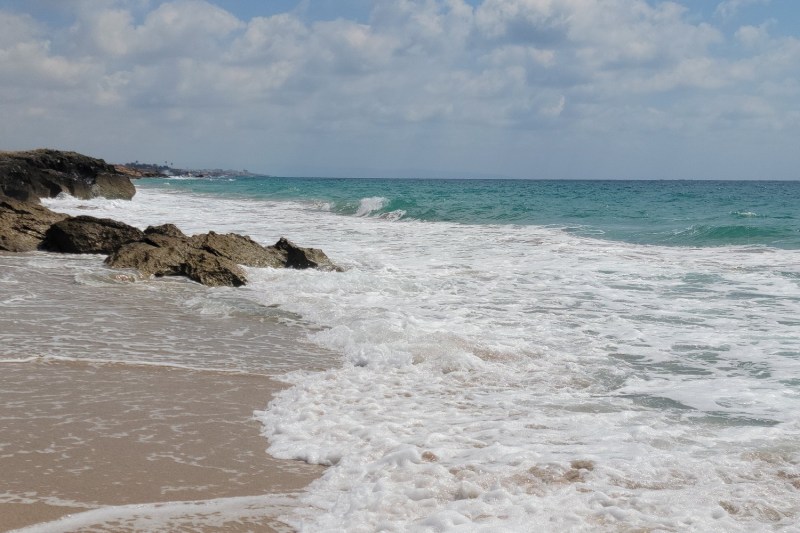
At the very northern tip of Israel’s Mediterranean coast, you’ll discover Rosh HaNikra. This region is most famous for its romantic sea caves and grottoes: They look and feel like Mother Nature specially carved them out of the mountains, and there’s simply no substitute for seeing them yourself. If you want to make it into a full beach day, Betzet Beach and the nearby beaches to the north provide ample natural beauty and sandy stretches of coastline where you can relax and enjoy the finest that the Mediterranean Sea has to offer. If you feel overwhelmed by the sea of humanity at the Tel Aviv beaches, you’ll especially like the calmer vibes up here.
Kfar Masaryk Kibbutz
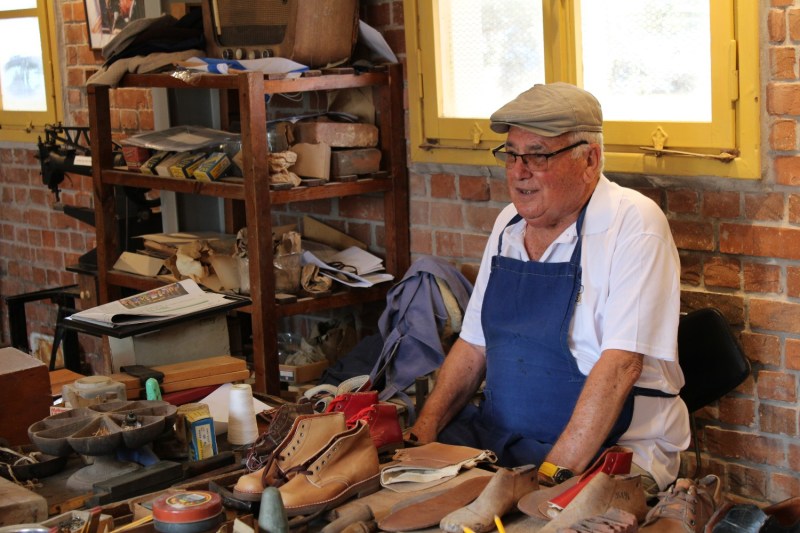
For more than 80 years, Kfar Masaryk has functioned as a working kibbutz. In the early days, it aimed to be an ideal democratic socialist society where everyone was on equal ground. When Israeli society and government began to shift towards a more Western European style mixed economy in the 1970s, Kfar Masaryk decided to adapt to the changing times. Yet even as other kibbutzim have transitioned into what we in the U.S. would call homeowner associations (HOAs), Kfar Masaryk very much remains a working kibbutz. Today, you can find artist studios, farms, a paper and cardboard factory, and even an electronic manufacturing facility on premises. You can call in advance to schedule a tour of the kibbutz. And if you really want a fully immersive experience, Kfar Masaryk even operates a 20-unit micro-resort so you can stay for longer and truly enjoy all that this beautiful community has to offer.
Jerusalem
Mahane Yehuda Market
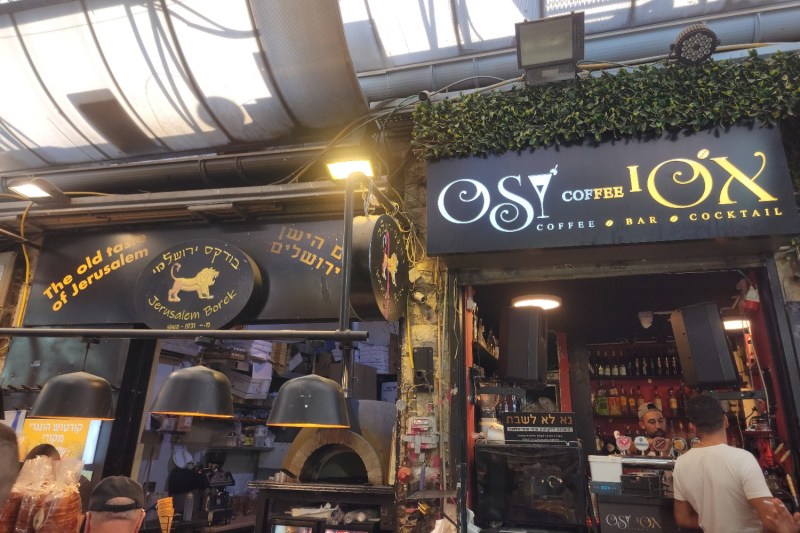
Like Tel Aviv’s Carmel Market, Jerusalem’s Mahane Yehuda market has experienced a lot of changes in recent years. While you can still find the old shuk with the fresh produce stands if you know where to look, locals and travelers increasingly crowd into this marketplace for craft beer, cocktail bars, new twists on old favorites like knafeh (see Knaf above), and plenty of good times in a pretty relaxed atmosphere.
Old City Ramparts Walks
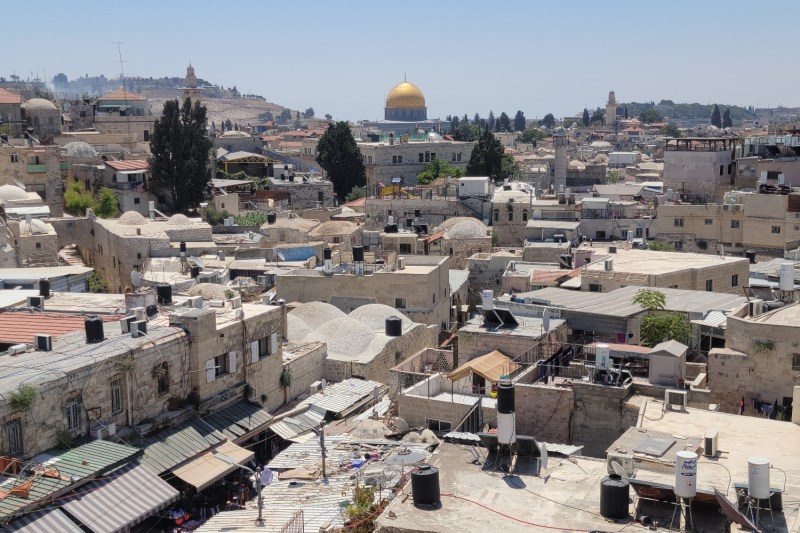
While walking the city walls doesn’t always sound like an exciting activity, this walking tour of the ramparts of Jerusalem’s Old City makes for a uniquely exhilarating hike. If you’re in Jerusalem, you want to hike, and you’re on a tight schedule that precludes an excursion to Ein Gedi or Masada — or even if you simply want to hike amidst ancient history — here’s your chance to see Old Jerusalem in a new light. Not only will you encounter panoramic views of Jerusalem landmarks like the Mount of Olives and the Dome of the Rock, but you will also encounter fascinating reminders that the Old City is still a city where people live and work.
Church of the Holy Sepulchre
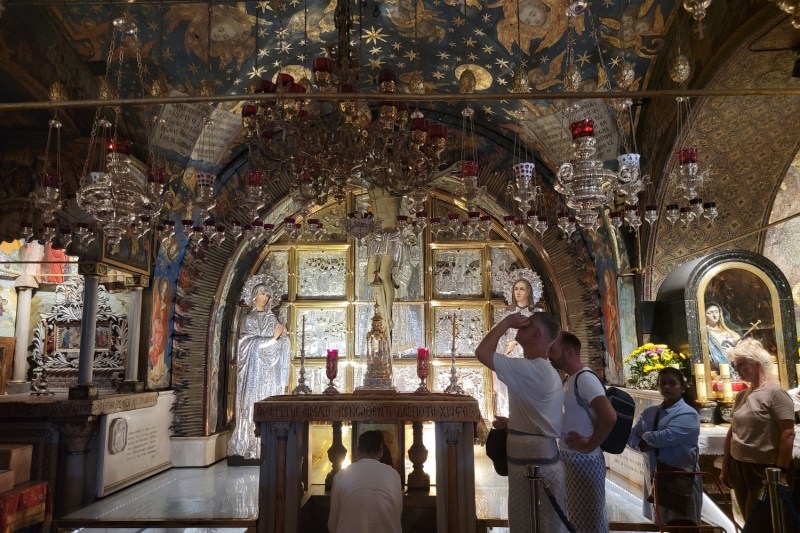
Regardless of whether or not you identify as Christian, this church will move you. It was first consecrated all the way back in 335 CE, and it’s perhaps Jerusalem’s top Christian attraction because believers largely consider this site to be where Jesus Christ was crucified, buried, and resurrected. Several Christian denominations now share authority over the grounds and responsibilities to maintain all the history here. Despite multiple sieges and natural disasters over the centuries, this church still stands as a testament to the faith of those who come seeking divine inspiration. As you tour this remarkable church and take in the stunning late-Roman, Byzantine, and Crusader-era artifacts, you too may feel a special divine presence.
The Temple Mount: The Western Wall, the Dome of the Rock, and Al-Aqsa Mosque
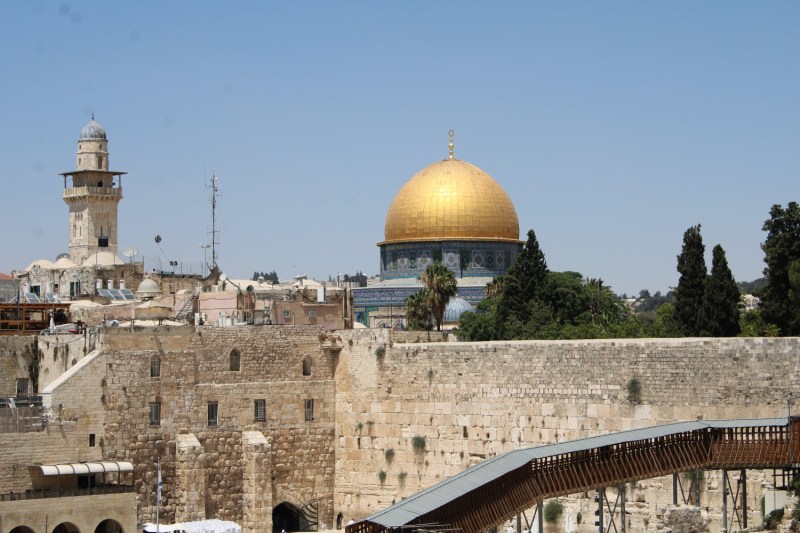
This is perhaps the most iconic place in all of Jerusalem, and it certainly feels like the most spiritually potent location. At the Western Wall, you can have a close encounter with over 2,000 years of history. King Herod built this wall as part of his plan to expand the Second Jewish Temple, and this wall survived the Roman Empire’s sacking of the Temple in 70 CE. A little over 600 years later, Umayyad caliph Abd al-Malik built the Dome of the Rock on the former site of the Second Temple (which the Romans had neglected once Rome supplanted Jerusalem as Christianity’s unofficial capital) to commemorate Islam’s founding prophet Muhammad and his miraculous night journey from Mecca to here. Then in 705 CE, Abd al-Malik and his son, al-Walid, built Al-Aqsa Mosque for Muslims to worship in Islam’s third-holiest city (after Mecca and Medina in present-day Saudi Arabia).
This area again became the focal point of the region’s geopolitical conflict following the establishment of modern Israel in 1948 and Israeli expansion into East Jerusalem and the West Bank in the 1967 Six Day War, and security throughout the area remains air-tight to this day. Access to Al-Aqsa and the Dome of the Rock remains highly restricted — non-Muslims can only enter through the Mughrabi Gate on select weekday mornings. However, the Western Wall is open to the public every day: You simply need to enter through a security checkpoint and adhere to the site’s modesty rules in order to walk down to the wall. If you want to see even more of the wall and the remains of the Second Temple, you can schedule an underground tour and discover more of this very special place.
Tips for Planning a Better Trip
Safety
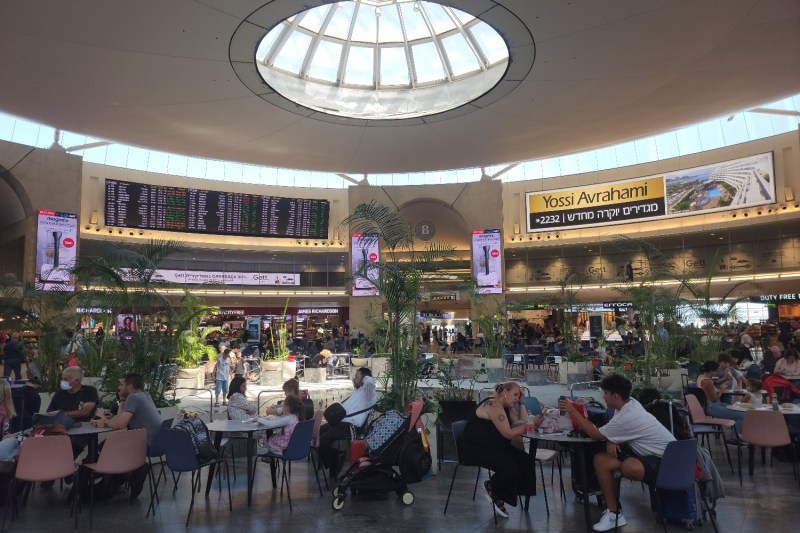
Even before 2020, Israel and the larger Levant region frequently made headline news for war and political instability. As of summer 2022, Israel is making news for another dissolution of parliament (in Israel, it’s called the Knesset) and its fifth election in three years. That sounds scary, but it’s actually a sign of the country’s political system working. Israel will continue to have a fully functioning government all the way through its next election in November, and security forces will continue to work to guarantee the safety of the entire country.
Speaking of security, the U.S. State Department continues to place Israel and the Palestinian-governed West Bank and Gaza Strip at Level Two, which comes with the advice to “exercise increased caution”. While this might also sound scary, please keep in mind that Israel and Palestine share the same Level Two status with Chile, the Bahamas, the United Kingdom (U.K.), France, and Germany — all nations that Americans consider to be “safe countries.”
Notes on Cross-Border Travel
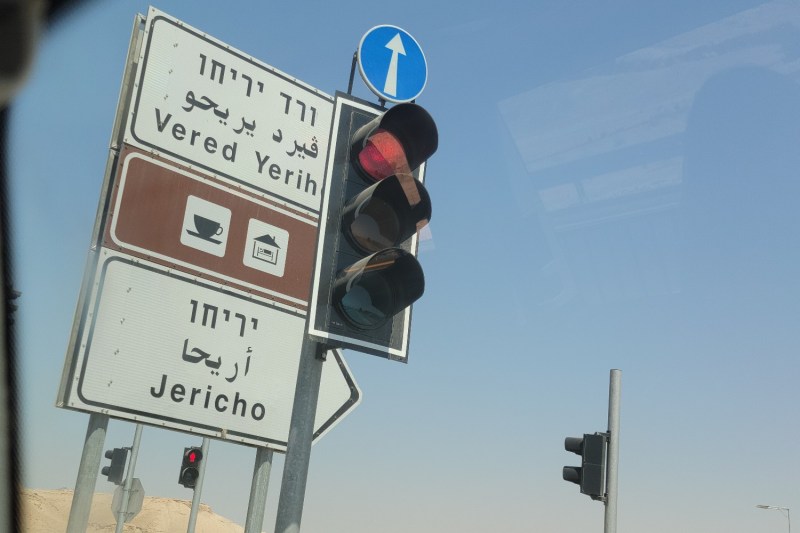
If you’re planning to travel to West Bank areas that are primarily governed by the Palestinian Authority — such as Bethlehem, Jericho, and Ramallah — you are free to go, but prepare to wait at the West Bank’s border checkpoints. If you’re asked by security staff at Ben Gurion Airport about your travel itinerary extending into the West Bank, make sure to be honest about where you want to go. Gaza, however, remains largely closed to tourists. If you want a tour guide for your West Bank excursion, you will probably need a Palestinian tour guide, as Israeli citizens are forbidden from entering areas where the Palestinian Authority has the most autonomy.
While it’s fairly easy to cross the Israeli border into Jordan and Egypt, please remember that visas are required to visit both countries if you’re coming from the U.S. Though it’s technically possible to travel from Israel to Lebanon through third-party nations like Jordan, it’s much more difficult due to Lebanon’s ongoing political instability and internal conflicts, as well as the two countries’ still very strained relationship.
When you first arrive in Israel, you will probably receive a paper slip, rather than a stamp in your passport. Make sure to keep this paper slip in or alongside your passport, as you will need it to re-enter Israel should you cross into a neighboring country as well as to exit Israel when it’s time to head home. While most Western nations and a growing number of Muslim-majority nations have friendly relationships with Israel, Israel continues to have strained or nonexistent relationships with certain other countries — hence why they now tend to provide these special paper slips instead of passport stamps.
Public Health
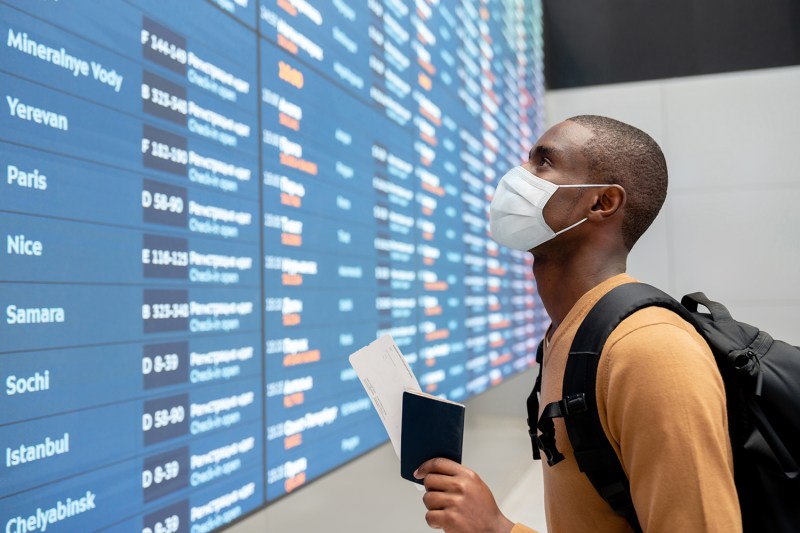
Returning to the topic of safety, let’s talk about health precautions. Israel has a fairly high vaccination rate, and its COVID-19 infections, hospitalizations, and deaths remain well below U.S. levels and on par with Western Europe. Despite all this, Israel’s COVID-19 infections and hospitalizations rebounded again earlier this year after prior health safety rules expired. Community spread increased, and the resumption of global tourism meant the return of large crowds across the country. At least as of July 2022, this summer surge appears to be receding.
While Israel no longer has any COVID-19 vaccine or testing requirements in effect, you can nonetheless utilize the following measures to protect yourself and others: Don’t travel if you’re feeling ill, stock up on rapid tests (which the U.S. government continues to provide free to citizens), get boosted to maximize your COVID-19 vaccine’s efficacy, and wear high-quality masks — preferably, KN95 or N95 grade — when you venture into crowded and/or indoor spaces.
How to Save Money and Get Around
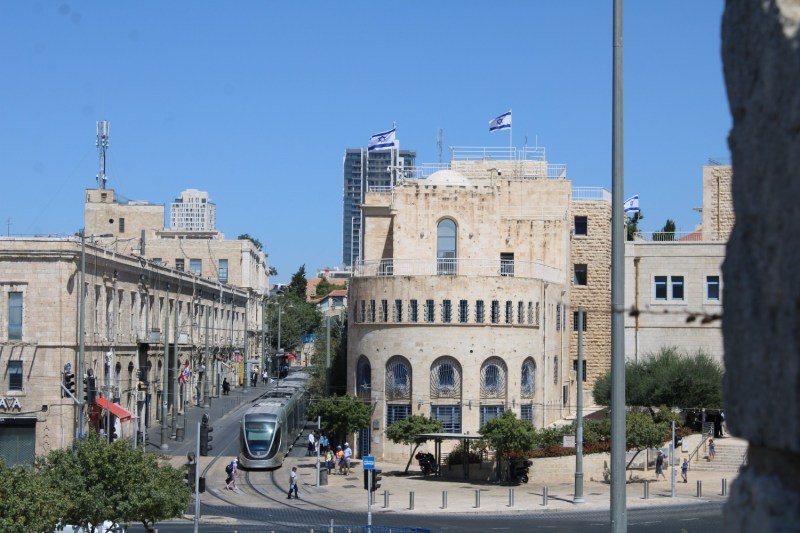
Israel may not be as famous of a Mediterranean tourist hub as the Greek Islands or the French Riviera, but it nonetheless attracts a lot of tourists — as in, over 4.5 million foreign visitors in 2019 — and prices can soar pretty high at the most popular tourist destinations. Fortunately, Israel is also rich in tasty cheap eats and fun arts and crafts. If you’re staying in a larger city with a shuk or souk, take full advantage of it: Try some street food from local vendors, and shop here for souvenirs before you hit the pricier boutiques at the hotels and upscale malls.
If you plan on traveling Israel car-free, Israel Railways has a growing rail network that now offers affordable high-speed rail service between Tel Aviv and Jerusalem Sunday through Thursday, as well as lines connecting Tel Aviv to Haifa in the north and Be’er Sheva in the south. If you need to travel during Shabbat (Friday night to Saturday night), please keep in mind that Israel Railways and most bus routes tend to be completely shut down across the country, and private car rides — such as cars ordered through the Gett app — will likely cost more.
Notes on Culture and Language
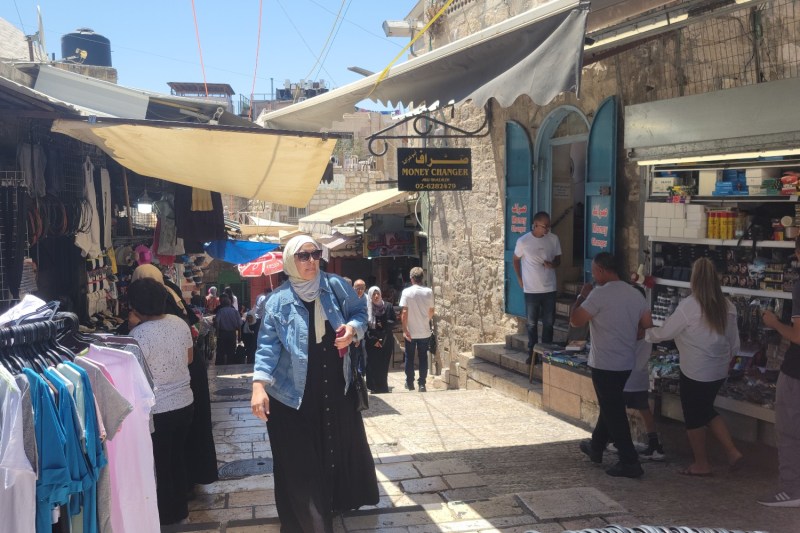
Though many conservative religious sects call Israel and Palestine home, most of the region — especially the major cities — feels more open and accepting than what Westerners typically assume of Middle Eastern countries. In most areas, you won’t have problems wearing shorts and T-shirts in public. When it comes to LGBTQ+ acceptance, Tel Aviv tends to have the strongest queer culture and welcoming attitude, while ultra-religious (whether Judaist or Muslim) communities tend to be more guarded. Whoever you are, as long as you’re respectful of local communities and their traditions, you should be safe.
Israel basically recognizes and utilizes three languages: Hebrew, Arabic, and English. If you’re mainly hopping around major cities like Jerusalem and Tel Aviv, you shouldn’t have trouble communicating with others in English. If you’re planning to visit small towns and remote rural areas, it’s probably a good idea to go with a tour guide and/or work on your Hebrew and Arabic skills.
More on Israel’s Culture and Diversity
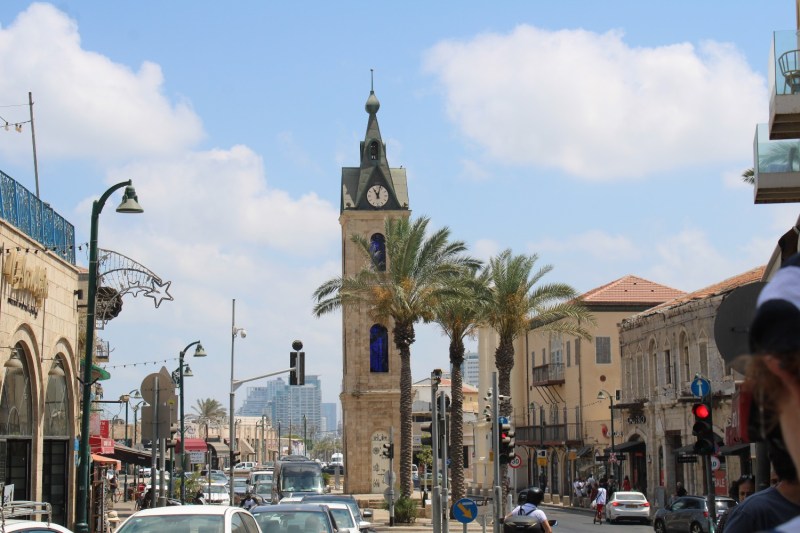
Contrary to outsiders’ assumptions of how Israel works and who lives here, around 25% of Israel’s population is non-Jewish as of 2019. In addition, among Jewish Israelis, there’s remarkable racial and ethnic diversity as well as diverse approaches to religiosity and practicing Judaism. As you travel around the country, you’ll eventually realize that Israel’s diversity makes for amazing adventures here. Jewish, Muslim, Christian, Druze, Baháʼí, and other religious traditions all contribute to Israel’s rich cultural tapestry; it’s always a good idea to explore the country without allowing any pre-conceived stereotypes to cloud your judgment on the people and the communities you interact with.
While the Israeli national government continues to defer to religious authorities on matters like closing public services during Shabbat, Tel Aviv has plenty of shops and services open on Fridays and Saturdays these days (including a special city bus service), and even Jerusalem now allows more businesses to stay open during Shabbat. It’s probably a good idea to check in advance to see which rules are in effect where you’re visiting, as well as whether you’ll be running into any special holidays during your visit.
Finally, Some Thanks
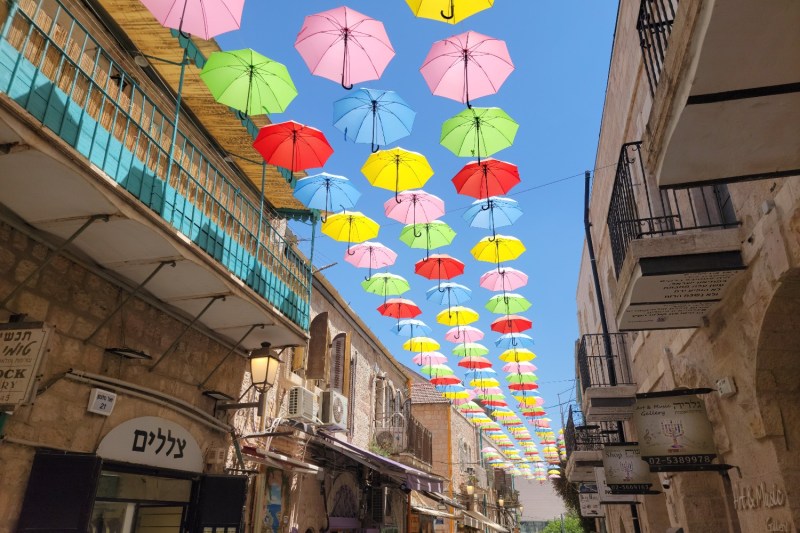
We could not have done this trip and gathered all this information for you without some critical help. We had the great fortune of having Mirit (Mika) Rabinovich as our tour guide throughout the trip. In addition, Western Galilee Now CEO Michal Shiloah Galnoor helped immensely in sending us in the right direction as we explored the Galilee. We also met some new friends who made this journey so much better. Thanks to all our new friends for making this Israel trip so spectacular, and for providing all the information we needed to put together this travel guide here.



